Advertisements
Advertisements
Question
Observe the following table and transfer the information into a paragraph:
Statewise Distribution of Urban and Rural Population in India:
| States | Population in Millions | |
| Rural | Urban | |
| Maharashtra | 560 | 410 |
| Gujarat | 320 | 190 |
| Madhya Pradesh | 440 | 160 |
| Chhattisgarh | 170 | 40 |
| Andhra Pradesh | 550 | 210 |
| Karnataka | 350 | 180 |
Solution
Population in India
The table represents State wise Distribution of Urban and Rural Population in India. The first one in the table is Maharashtra where Rural population is 560 million whereas Urban population is 410 million. The next is Gujarat where Rural population is 320 million and Urban population is 190 million. The next is Madhya Pradesh where the Rural population is more 440 million and the Urban population is 160 million. After Madhya Pradesh comes Chhattisgarh where the Rural population is 170 million and the Urban population is the lowest that is 40 million. The next one is Andhra Pradesh where the Urban population is 550 million but Maharashtra is still ahead in this and the Urban population is 210 million. The last one is Karnataka where the Rural population is 350 million and the Urban population is 180 million. So overall, if we see there is a variance in distribution of Urban & Rural population in different states of India. When compared Maharashtra has the highest rural & urban population whereas Chhattisgarh has the lowest in both.
APPEARS IN
RELATED QUESTIONS
Study carefully the following pie-chart about the Income Sources of a City Budget and write a short continuing paragraph based on it in about 120 words :

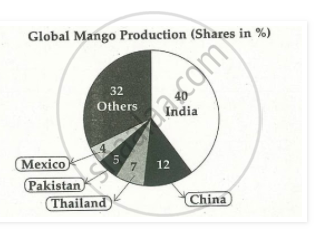
Transfer the information into a paragraph:
Read the following web diagram to transform into a paragraph:
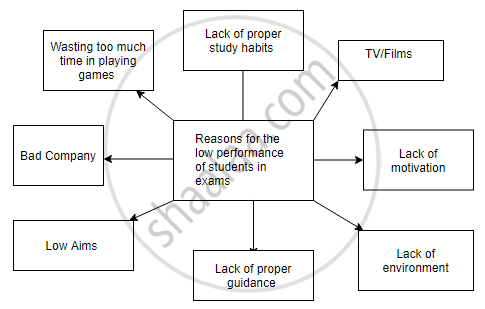
Transfer the information into a paragraph about ‘Average Annual Tea Consumption Per Person’ as shown in the table given below :
| Nation | Turkey | Ireland | United Kingdom | Russia | Morocco | China | India |
| Tea consumption per person ( in Kg) | 3.15 | 2.19 | 1.94 | 1.38 | 1.21 | 0.57 | 0.32 |
Views :
Develop a paragraph on the view by using the points given below :
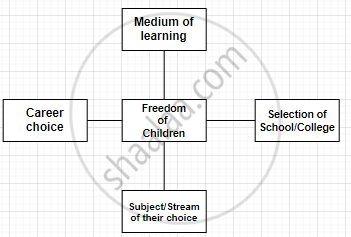
Non-verbal to Verbal
Study the table given below and prepare a paragraph on it.
| Alligators | Crocodiles | |
| 1. | U shaped round snout | V shaped round snout |
| 2. | Live in fresh water | Live in fresh water and saline water |
| 3. | Have wide jaws; upper jaw is wider than the lower jaw | Have narrow jaws; both the jaws are of the same size |
| 4. | Only upper teeth are visible when the mouth is closed | Both the teeth are visible when the mouth is closed. |
| 5. | No functioning salt glands | Very functional salt glands |
| 6. | Sensory pits on scales near the jaw | Sensory pits in every scale of the body |
Study the concept chart from the self-help magazine section of a monthly publication.
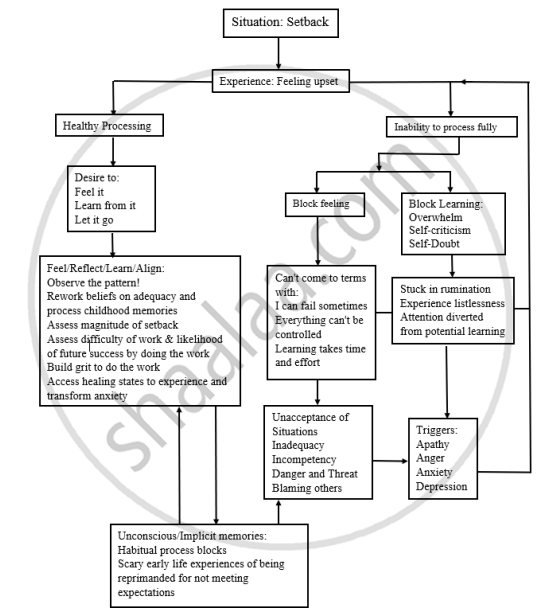
Write a paragraph in not more than 120 words, analysing the listed responses to the situation when one faces setbacks.
Non-verbal to verbal
Read the information from the given bar graph and write it in paragraph form.
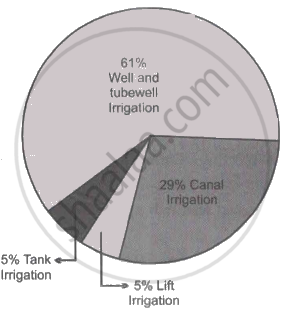
Transfer the given information in the form of a paragraph.
THE WATER CYCLE PROCESS

Non-Verbal to Verbal
Write a paragraph of 100 words based on the information given in the following table and give a suitable title for it:
| Types of Forests | Plants | Animals | |
| (1) |
Equatorial Evergreen |
Mahogany, Rosewood, Ironwood, Oil palm |
Different types of monkeys, snakes, lizards, bats, tse-tse flies |
| (2) | Marshes |
Mangraove, Creepers, Numerous tall trees like Mahogany |
Different types of insects, snakes, crocodiles, tse-tse and other flies |
